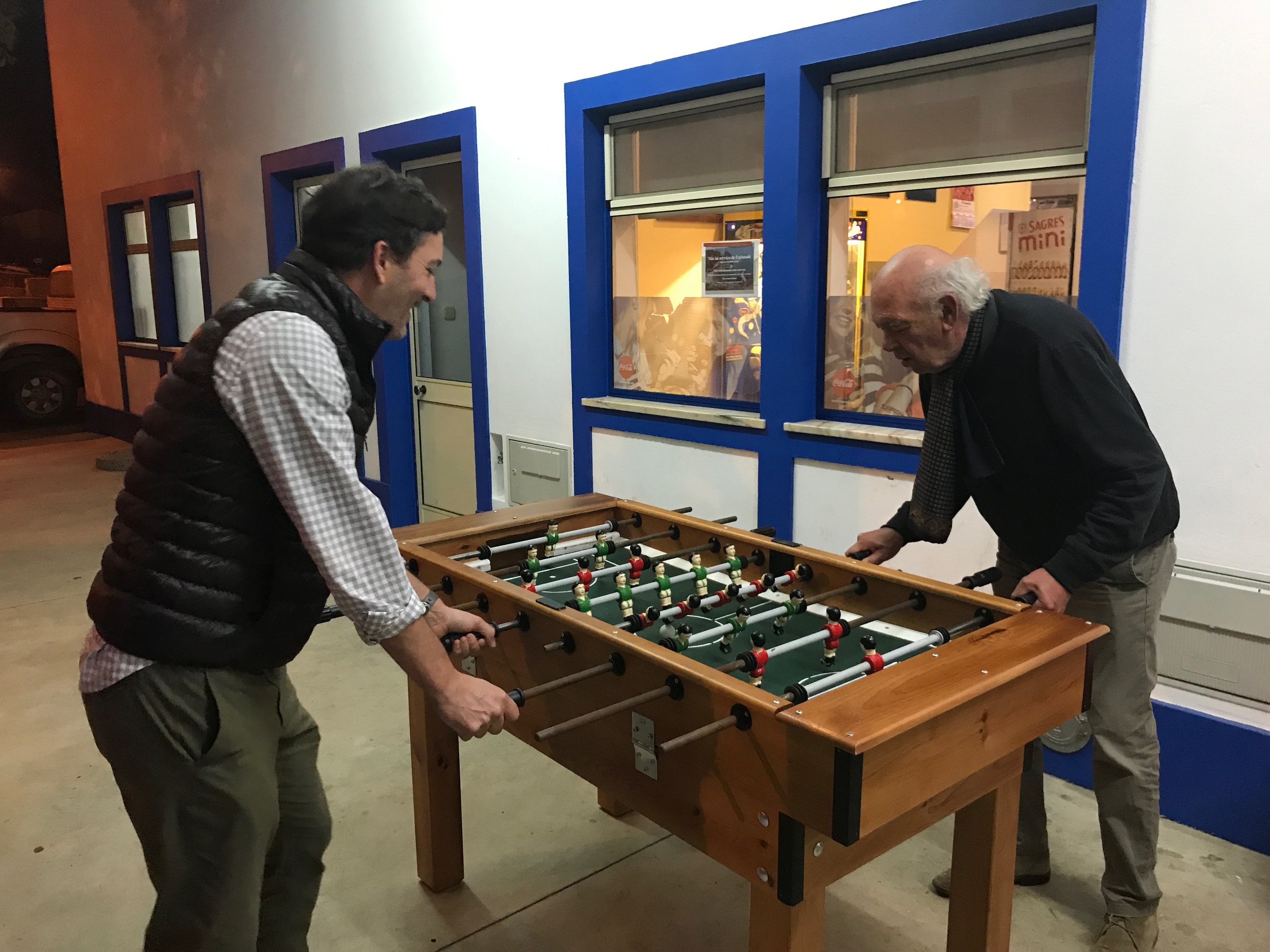Douro Valley
The Douro Valley is spectacular and worth more than just a day visit from Porto. We stayed at a very remote part of eastern Douro Valley, near Vila Nova Foz Coa. Our hotel, Casa do Rio, was fantastic - intimate & peaceful - only 8 rooms & 2 cottages, at a gorgeous setting, with beautiful dinners & great wines. But there was not much to do there besides walking around the surrounding vineyards, sitting by the infinity pool or kayaking on the river. If you want to mostly relax, this place is a must! But if you want to explore the Douro area and go wine tasting & check out restaurants, a better option would be to stay at Quinta do Vallado or Six Senses near Peso da Régua.
After a couple of days of pure relaxation, we drove from Casa do Rio to Porto, our next destination. We recommend taking the N222 route, that even though longer, it's quite scenic all the way to Peso da Régua.
While in Porto we had friends visit who wanted to see the Douro Valley, so we took a day-tour from Porto and it was great. This is the tour booked through airbnb Experiences: Wine Venture & Sailing in Douro Valley - www.airbnb.com/experiences/160799. Ricardo was our lovely guide. We got to visit off-the-beaten-path wineries, sail on the Douro & drive around some beautiful landscapes.
Porto
Porto is much smaller than Lisbon, full of history, beautiful monuments, nice parks & great beaches nearby. We unfortunately stayed in Porto for 9 days and all of them cold & with rain. And this was June!
SEE/DO
- Like most places, the first thing I recommend is to wander the streets, get lost and get a feel for the place. This is the best way to discover some beautiful vistas, interesting shops & architecture, good cafes & quaint streets.
- The second thing I usually recommend is a food tour. This all-day tour with Culinary Backstreets - https://culinarybackstreets.com/tours-food-tours/tours-porto/2018/beyond-barrel-decadent-home-heart-porto/ - will provide you with great knowledge of local history & you will also get to taste local dishes at ‘holes in the wall” you would never discover otherwise. Not to mention that you will walk all over the city.
- Walk across the Dona Maria Bridge, a stunning bridge designed by Gustave Eiffel and then hike up to the Mosteiro da Serra de Pilar which offers unbelievable views. You will then be on the other side of the river – Vila Nova de Gaia – where all the port tasting. Mercado Beira-Rio is a great food market if you need a snack after all this walking!
- Rua Miguel Bombarda, the new art street lined with galleries.
- São Bento train Station with its interior adorned by the famous typical blue Portuguese tiles.
- Livraria Lello is a historic art noveau bookstore that served as inspiration for the library in Hogwarts, Harry Potter. Extremely tourist with huge lines to get in and you have to purchase tickets prior to getting in line. Go early in the morning if you want to actually visit this place without the crowds!
- Crystal Palace Gardens is a lovely park to walk around and take advantage of the several viewpoints that offer wonderful panoramic views of the city.
STAY I’m not a big airbnb fan, since they are usually disappointing, but the house we rented in Porto - www.airbnb.com/rooms/17784106 - was wonderful and it’s host Fernando was fantastic. If this house is too big, please know that Fernando owns smaller properties. He is an architect so has great attention for design details and also is very thoughtful as a host.
EAT Taberna dos Mercadores [small delicious seafood restaurant; a bit touristy but still special; reservations in advance are a must for lunch or dinner] Shiko, Tasca Japonesa [small Japanese restaurant with a Portuguese touch] Oficina [gorgeous modern/industrial space with very contemporary Portuguese dishes] Muu Steakhouse [cosmopolitan, good food & great service; book ahead of time] Cervejaria Brasão Aliados [casual & fun restaurant with pretty decent food] Casa Guedes [very casual tasca famous for its pork sandwiches and rose wine; pork sandwich was delicious, but I did not care for the rose wine!] Gazela [very casual restaurant with a u-shaped counter that only serves cachorrinhos, a version of hot dog, but nothing like a hot dog we’re used to. It gets packed at lunch, so get there right before it opens its doors] Flow Restaurant & Bar [beautiful space & very good food; lunch on the outdoor patio & dinner inside is my recommendation] Ecuador Chocolate Shop [fantastic chocolates locally made; far superior than Arcadia, the famous Porto chocolate maker]
DRINK Café Candelabro [a cafe/bookshop/bar - the spot for coffee by day and cocktails by night] Capela Incomum [great wine bar in an old chapel]















































































































































































































































